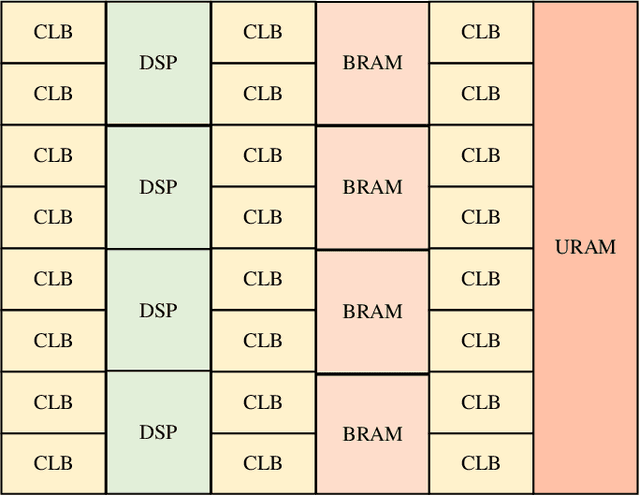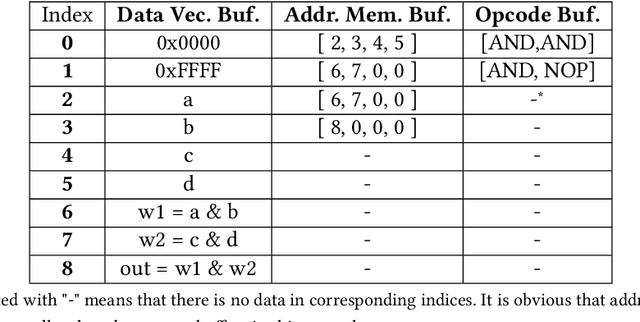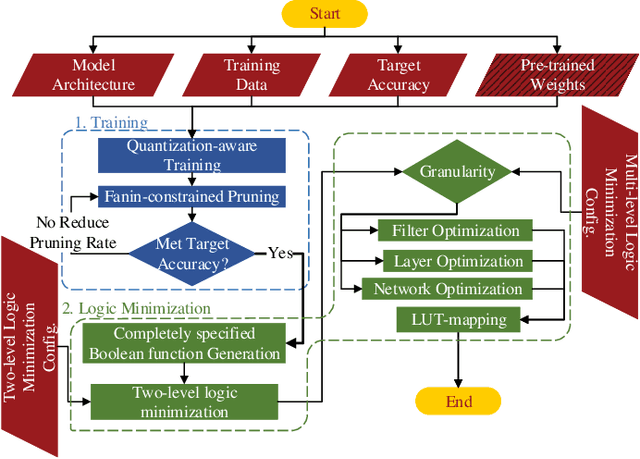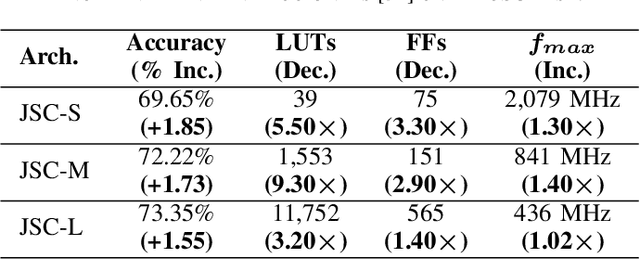Soheil Nazar Shahsavani
Efficient Compilation and Mapping of Fixed Function Combinational Logic onto Digital Signal Processors Targeting Neural Network Inference and Utilizing High-level Synthesis
Jul 30, 2022



Abstract:Recent efforts for improving the performance of neural network (NN) accelerators that meet today's application requirements have given rise to a new trend of logic-based NN inference relying on fixed function combinational logic. Mapping such large Boolean functions with many input variables and product terms to digital signal processors (DSPs) on Field-programmable gate arrays (FPGAs) needs a novel framework considering the structure and the reconfigurability of DSP blocks during this process. The proposed methodology in this paper maps the fixed function combinational logic blocks to a set of Boolean functions where Boolean operations corresponding to each function are mapped to DSP devices rather than look-up tables (LUTs) on the FPGAs to take advantage of the high performance, low latency, and parallelism of DSP blocks. % This paper also presents an innovative design and optimization methodology for compilation and mapping of NNs, utilizing fixed function combinational logic to DSPs on FPGAs employing high-level synthesis flow. % Our experimental evaluations across several \REVone{datasets} and selected NNs demonstrate the comparable performance of our framework in terms of the inference latency and output accuracy compared to prior art FPGA-based NN accelerators employing DSPs.
NullaNet Tiny: Ultra-low-latency DNN Inference Through Fixed-function Combinational Logic
Apr 07, 2021

Abstract:While there is a large body of research on efficient processing of deep neural networks (DNNs), ultra-low-latency realization of these models for applications with stringent, sub-microsecond latency requirements continues to be an unresolved, challenging problem. Field-programmable gate array (FPGA)-based DNN accelerators are gaining traction as a serious contender to replace graphics processing unit/central processing unit-based platforms considering their performance, flexibility, and energy efficiency. This paper presents NullaNet Tiny, an across-the-stack design and optimization framework for constructing resource and energy-efficient, ultra-low-latency FPGA-based neural network accelerators. The key idea is to replace expensive operations required to compute various filter/neuron functions in a DNN with Boolean logic expressions that are mapped to the native look-up tables (LUTs) of the FPGA device (examples of such operations are multiply-and-accumulate and batch normalization). At about the same level of classification accuracy, compared to Xilinx's LogicNets, our design achieves 2.36$\times$ lower latency and 24.42$\times$ lower LUT utilization.
 Add to Chrome
Add to Chrome Add to Firefox
Add to Firefox Add to Edge
Add to Edge